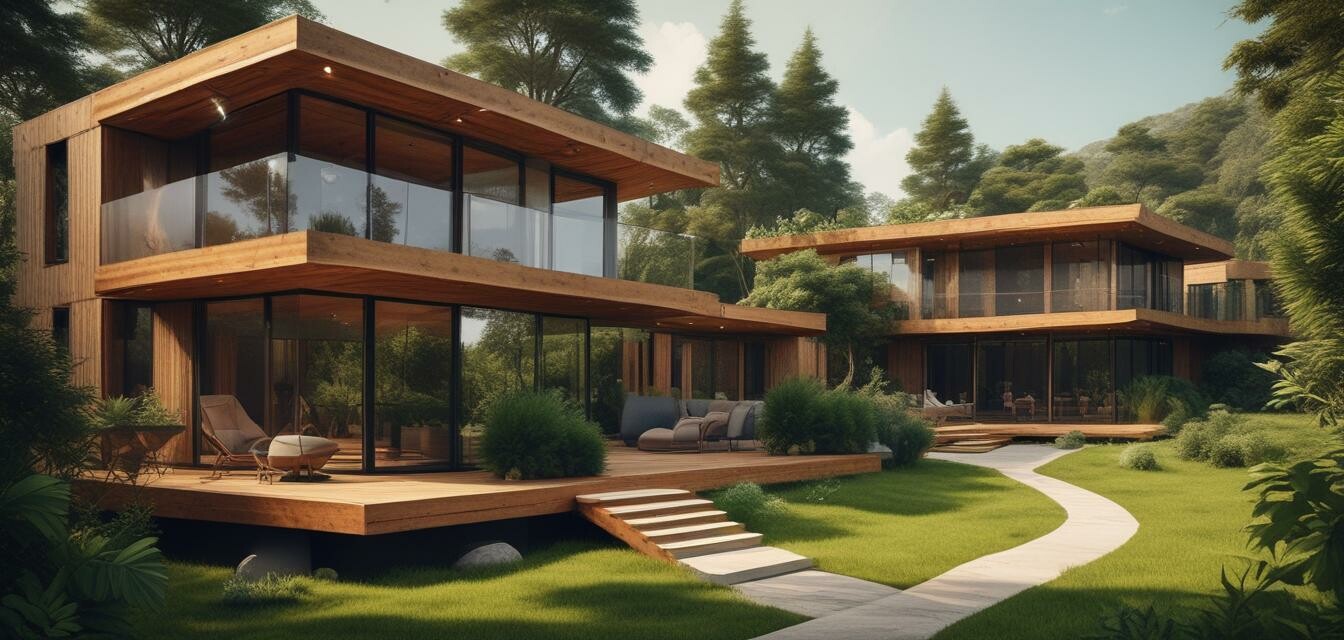
How wood can be a key player in green architecture
Key Takeaways
- Wood is a renewable resource that contributes to sustainable building practices.
- Incorporating wood can significantly reduce carbon footprints in architecture.
- Wood enhances indoor air quality and promotes a healthier living environment.
- Using reclaimed wood is an eco-friendly option that supports the circular economy.
- Wood’s natural insulation properties improve energy efficiency in buildings.
Green architecture seeks to minimize the environmental impact of buildings, and one of the most effective materials in achieving this goal is wood. This article explores how wood can play a critical role in sustainable building practices, its numerous benefits, and how it contributes to a healthier planet.
Why is wood an excellent choice for green architecture?
| Benefits of Wood | Description |
|---|---|
| Renewability | Wood is a natural and renewable resource that can be sustainably sourced. |
| Carbon Sequestration | Wood absorbs carbon dioxide during its growth, helping to reduce greenhouse gases. |
| Energy Efficiency | Wood's insulation properties provide energy savings and reduce heating costs. |
| Indoor Air Quality | Natural wood improves indoor air quality by regulating humidity and increasing comfort. |
| Biophilic Design | Wood creates a warm, welcoming atmosphere that fosters a connection with nature. |
The role of sustainable sourcing in wood usage
When utilizing wood in architecture, it's essential to focus on sustainable sourcing practices. This includes:
- Certifications such as FSC (Forest Stewardship Council), which ensure responsible forest management.
- Choosing reclaimed wood to give a new life to old materials, reducing waste.
- Supporting local suppliers to decrease transportation emissions.
How to incorporate wood into green architecture
Integrating wood into architectural designs can take many forms. Here are some innovative applications:
- Structural Elements: Use wooden beams, posts, and trusses for the structural framework.
- Exterior Cladding: Wooden facades can enhance aesthetics while providing insulation.
- Interior Finishes: Wooden floors, paneling, and furniture can create a warm environment.
- Landscape Architecture: Incorporate wooden decking, pergolas, and pathways to promote outdoor connections.
The impact of wood in urban settings
In urban planning, integrating wood into buildings can help mitigate the heat island effect, as well as improve the quality and aesthetics of living spaces. Consider these points:
| Aspect | Traditional Materials | Wood |
|---|---|---|
| Carbon Footprint | Higher emissions due to processing and transport. | Lower emissions due to natural growth and processing. |
| Thermal Performance | Poor thermal insulation. | Excellent thermal insulation, reducing energy use. |
| Aesthetic Appeal | Often cold and industrial look. | Warm, inviting, and versatile designs. |
| Recyclability | Varies significantly. | Highly recyclable and biodegradable. |
Maintaining wood for longevity
Proper maintenance of wooden structures is essential for ensuring their longevity and retaining their beauty. Some effective maintenance tips include:
Beginners Tips
- Regular cleaning using non-toxic wood cleaners.
- Apply natural wood conditioners to prevent drying and cracking.
- Avoid exposing wood to excessive moisture and direct sunlight.
- Inspect for pests regularly and address issues immediately.
The future of wood in architecture
As the world moves towards sustainability, the demand for wood in architecture is set to grow. With advancements in technology, wooden building techniques are becoming more refined and innovative. Architects and designers are increasingly recognizing the benefits of wood, not only for its environmental advantages but also for its aesthetic appeal.
Pros
- Environmentally friendly option for building materials.
- Reduces carbon emissions during construction and use.
- Offers warmth and beauty to living spaces.
Cons
- Susceptible to pests such as termites if not properly treated.
- Requires regular maintenance to protect its beauty and longevity.
In summary, wood is not just a building material; it’s a crucial component of green architecture. Highlighting its benefits and sustainable sourcing practices reinforces the importance of making informed choices that impact our environment positively. For more in-depth information on choosing sustainable materials, check our guide on Buying Guides.
By embracing wood in building practices, we can contribute to a greener, healthier planet for future generations.